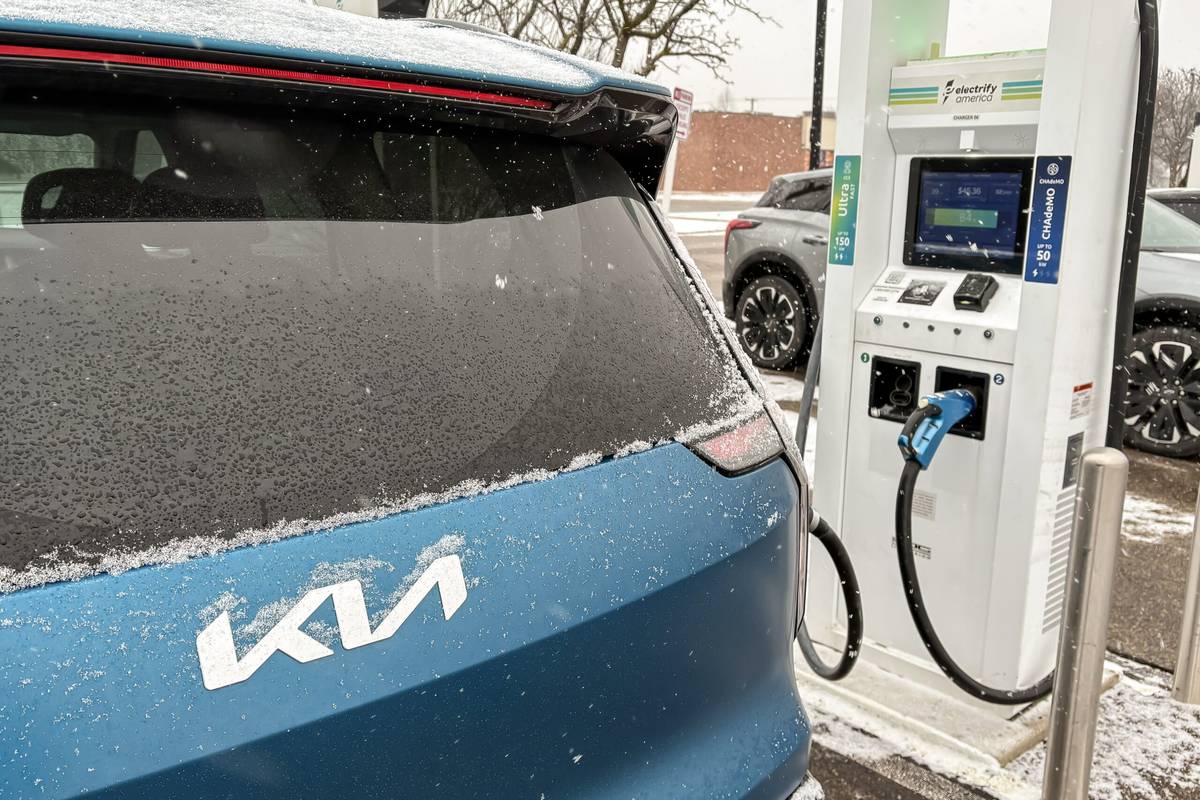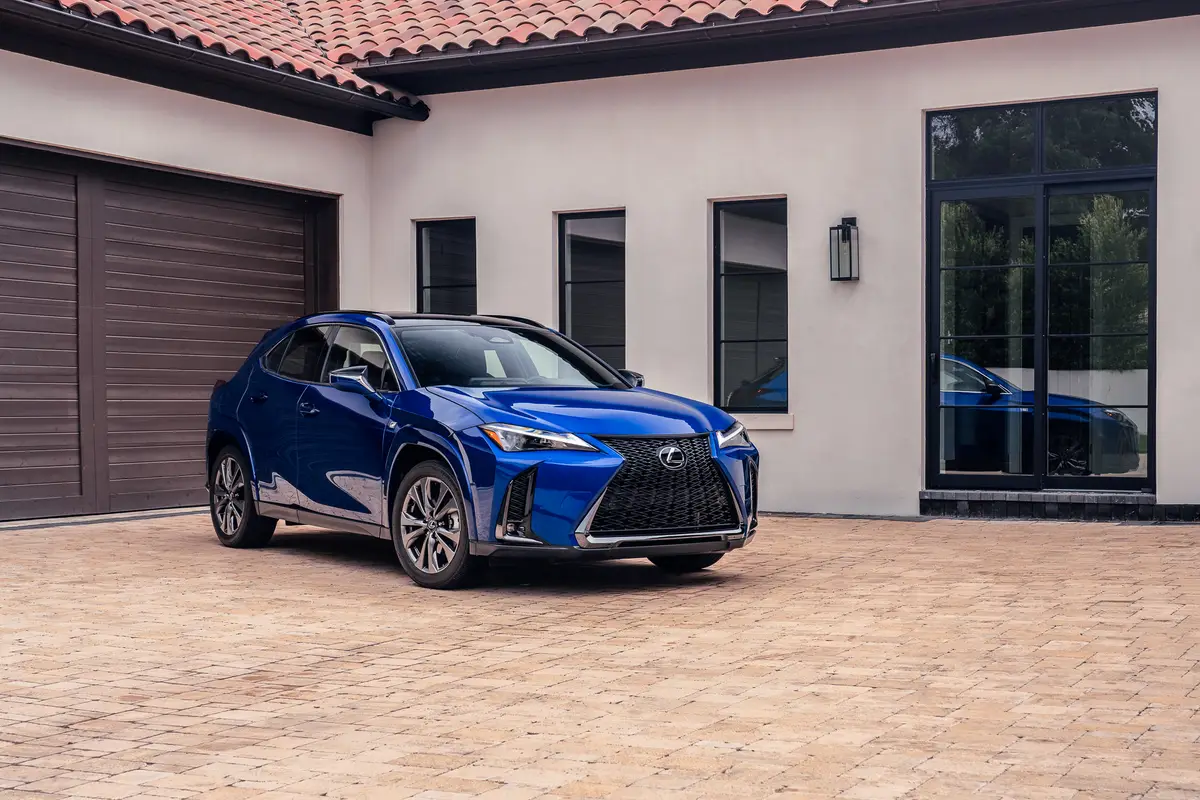chicagotribune.com's view
V stands for vroom in powerful CTS
About halfway down the straightaway, the eyes sneak a quick peek at the speedometer reading–100 m.p.h.–and rising.
When the straightaway ended, the course took on a serpentine shape with sharp left and right twists. The sedan sat flat and in control without lean or sway as it darted into and out of each change in path while gaining speed.
No doubt about it, Cadillac slipped a ringer onto the Elkhart Lake, Wis., track–the high-performance CTS-V rendition of the CTS sedan.
The CTS is the strikingly stylish successor to the Catera, the sedan that looked like a Chevrolet but wanted to be treated like a Cadillac until the automaker retired it after the ’02 model year.
The CTS-V is the spirited high-performance rendition of the CTS, a product of GM’s Performance Group that also created the Pontiac Bonneville GXP and Saturn Ion and Vue Red Line versions. Soon it will bring out the Chevy TrailBlazer SS and Cobalt SS for those for whom fun takes precedence over fuel economy and who would rather hug a checkered flag than any tree.
“BMW was a charter member of the luxury performance club with its M-Series, along with Mercedes-Benz and its AMG series and now Audi with its S-Series. We felt the time was right for Cadillac to join a club that had no domestic members in it,” said Karen Rafferty, marketing manager for the Cadillac V-Series.
A club, by the way, that still lacks a Lincoln.
On the track, as well as on the roads in Wisconsin and Illinois, the V-Series CTS does things you don’t expect from a sedan, and certainly not from a Cadillac unless it carries a badge reading XLR to denote the automaker’s high-performance roadster.
The CTS makes you feel like you’re piloting a Corvette or a Viper. Cadillac owners comparing notes about g-forces rather than towing ratings! Who would have thought?
The 5.7-liter V-8 delivers 400-horsepower and produces 395 foot-pounds of torque. It’s considerably more lively than the 3.6-liter, 255-h.p. V-6 in the regular CTS sedan that produces 255 foot-pounds of torque.
More important the V-Series comes with sports-tuned shocks, springs and stabilizer bars, complemented by StabiliTrak, so the limber machine is able to make moves that DeVille owners can only dream about.
The CTS-V blends toss-you-back-into-the-seat power with keep-you-planted-in-your-seat handling during aggressive motoring. After all, power without the ability to control it does little else than consume fuel and destroy steel-belted radial tires.
Or, as Rafferty refers to it, the CTS-V delivers “power that you can manage.”
With the sports-tuned suspension controlling up and down gyrations and StabiliTrak ensuring the body doesn’t waver or wander in lateral moves, the car makes you a better driver, providing that you don’t try to exceed the laws of physics when it comes to spee d versus changes in direction and know when to apply the brakes.
The reason for CTS-V’s being is that Cadillac sorely needs to attract younger buyers from rivals. To shed the stodgy, old folks sedan image, Cadillac has provided motorists with a serious performance car and not just a sedate luxury sedan dressed to look like one.
“The CTS-V and XLR roadster are leading the way for us. And the CTS-V isn’t going to be a short-termer or an in-one-day, out-the-next offering. And we’ll have more Cadillac V-Series offerings after this,” Rafferty said.
She wouldn’t say which, but sources have said the ’05 STS successor to the Seville has been earmarked for V treatment as well.
The CTS-V is meant to be a limited-edition number with output of about 5,000 units annually.
“It’s meant for the enthusiast and only comes with a 6-speed manual because we felt that nothing says Cadillac is serious about a high-performance car better than a 6-speed manual ” Rafferty said.
The 6-speed not only takes advantage of the horsepower and torque, it’s also super smooth and one of the more user-friendly manuals in the industry. No notchiness or balkiness, and the effort needed to work the clutch is light and doesn’t require that you stand on the pedal to move through the gears.
Cadillac calls it “refining” the manual. Those who graduated from the “no-pain, no-gain” school of high-performance cars will be disappointed. Too bad.
While the CTS and V-Series feature the same chiseled styling, the V differs with its stainless steel wire mesh grille, rocker panel extensions, dual chrome exhaust tips and V-badging on the outside. Inside, there’s a lowered center console armrest for easier shifting, performance-oriented instrument cluster and reduced noise thanks to a nylon engine cover–along with suede insets on the leather seats to better hold passengers in place.
Other noteworthy CTS-V features include 18-inch run-flat radials, four-wheel anti-lock brakes, all-speed traction control, four-piston Brembo brakes and front- and side-impact air bags as well as side air-bag curtains front and rear. The front passenger bag won’t deploy if the seat is empty, and a “bag off” warning light is in the rearview mirror.
Neat touches are a driver info center with readings of pressure at each tire as well as g-forces encountered into and out of turns.
A couple of gripes: One, a $1,300 gas-guzzler tax, the other an unforeseen problem with the addition of a 6-speed.
There’s a power outlet low in the dash directly behind the gearshift lever to insert the plug for your cell phone. No problem with the automatic gearshift lever for which the car was designed, but serious problems wrapping your knuckles against the phone plug when shifting into fifth gear and reverse with the 6-speed.
Rafferty pointed out–too late–that there’s a second power plug hiding along the back of the center console to solve the knuckle problem.
The ’04 CTS-V bowed in February and Cadillac quickly switched to the ’05 model this month.
Though offered only a short time, Rafferty said there’s been a few surprises.
“We’re seeing more non-Cadillac buyers than we thought–and very few trade-ins. Fewer than 40 percent of the buyers are trading a car in, which means the V is an addition to their fleet,” she said.
Base price of the CTS-V is $49,300, about $19,000 more than the CTS. There are no incentives.
To simplify buying, there’s only one option, a sunroof at $1,200. But there’s one added charge, that $1,300 gas-guzzler tithe. The 400-h.p. V-8 delivers only 15 m.p.g. city/23 m.p.g. highway, not much better than some sport-utility vehicles.
Standard equipment includes an OnStar emergency communication system with one-year free service, after which the monthly fee is dictated by the package you choose; XM satellite radio, though after three months of free service you have to pay the $9.95 monthly subscription fee; and a navigation system–with no extra fees.
Also standard are power (heated) seats, (heated) mirrors, locks and windows; cruise control; AM/FM/CD; daytime running lamps; fog lamps; and remote keyless entry.
– – –
TEST DRIVE
2005 Cadillac CTS-V
Wheelbase: 113.4 inches
Length: 191.5 inches
Engine: 5.7-liter, 400-h.p. V-8
Transmission: 6-speed manual
Fuel economy: 15 m.p.g. city/23 m.p.g. highway
Base price: $49,300
Price as tested: $50,500. Includes $1,200 for power sunroof. Add $1,300 for gas-guzzler tax and $695 for freight.
Pluses: A Cadillac with wings, because this thing can fly. Speed complemented by glue-the-radials-to-the-pavement suspension. Front-end design with stylish wire-mesh grille. Smooth 6-speed. Seats designed (and suede-covered) to hold you in place when driving ggressively and in comfort when simply cruising. Only one option (sunroof).
Minuses: Only 6-speed manual. Guzzler tax. Skin-your-knuckles location of cell phone power plug behind the shift lever.
Latest news



